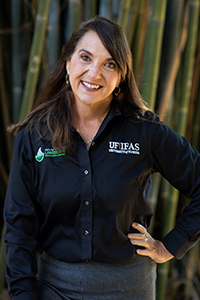Wendy's Wanderings
June 6, 2023
Seed Sleuthing
On June 3, 2023, the UF/IFAS 4-H Horticulture Identification and Judging contest was held in Newberry Florida. This contest asks 4-H students to identify 140 plant specimens and judge eight classes of plants. The plants are divided into four categories: flowers and foliage, ornamentals, fruits, and vegetables. The kids learn 200 plants and our horticulture team prepares challenging samples for them to identify.
This year we had 43 students attend from seven Florida counties. They are supported by their 4-H agents and 4-H volunteers. The top-scoring senior team (this year Hillsborough County) is eligible to compete in a national contest. The dedication and knowledge of these students is quite impressive, and the contest is always fun for the 4-H'ers and the adults. Our UF horticulture team that prepares the contest is made up of horticulture agents and specialists. We have a great time arranging the 140 samples and going back and forth with each other, discussing how difficult the samples should be. The team wants to challenge the participants but also to encourage them.
At the contest this year I had a little gift for UF/IFAS Extension Taylor County agent Lisa Strange. It was a red and gray seed necklace that I had purchased in Cuba earlier this year. She asked me if I knew what the seeds were, and sadly I was unable to give her the names of the plants that the seeds came from. Now we had our own ID contest going on!

Cue Marc Frank, our UF/IFAS Extension botanist to the rescue. He sprung into action and was able to ID the gray seeds as Coix lachyrma-jobi, commonly known as Job's tears, coixseed, or tear grass, in the Grass family. It is native to southern Asia (from India east to the Philippines) but widely cultivated both as a grain and as an ornamental; it also occasionally escapes elsewhere in the tropics and subtropics. Learn more about Job's tears at the North Carolina State Extension website.
The red seeds looked familiar but Marc needed to do a little more research. In less than 15 minutes he was able to home in on false sandalwood tree (Adenanthera pavonine), also known as the red beadtree, as the source of the red seeds. Red beadtree is in the legume family and is native to southern Asia to northeastern Australia. In the tropics it is widely cultivated and has escaped and become established. In Florida, it has escaped from cultivation and is rarely found established in the wild in South Florida. The UF/IFAS Assessment of Non-Native Species in Florida's Natural Areas indicates that it should be grown with caution in South Florida.
As we were testing the 4-H'ers, we were also learning ourselves. Adults and students love a good puzzle and luckily we had our sleuthing botanist with us to be the Sherlock Holmes of seeds. If you are interested in becoming involved in the Horticulture ID and Judging contest, please contact your local UF/IFAS 4-H or horticulture Extension agent.
-- Wendy Wilber

